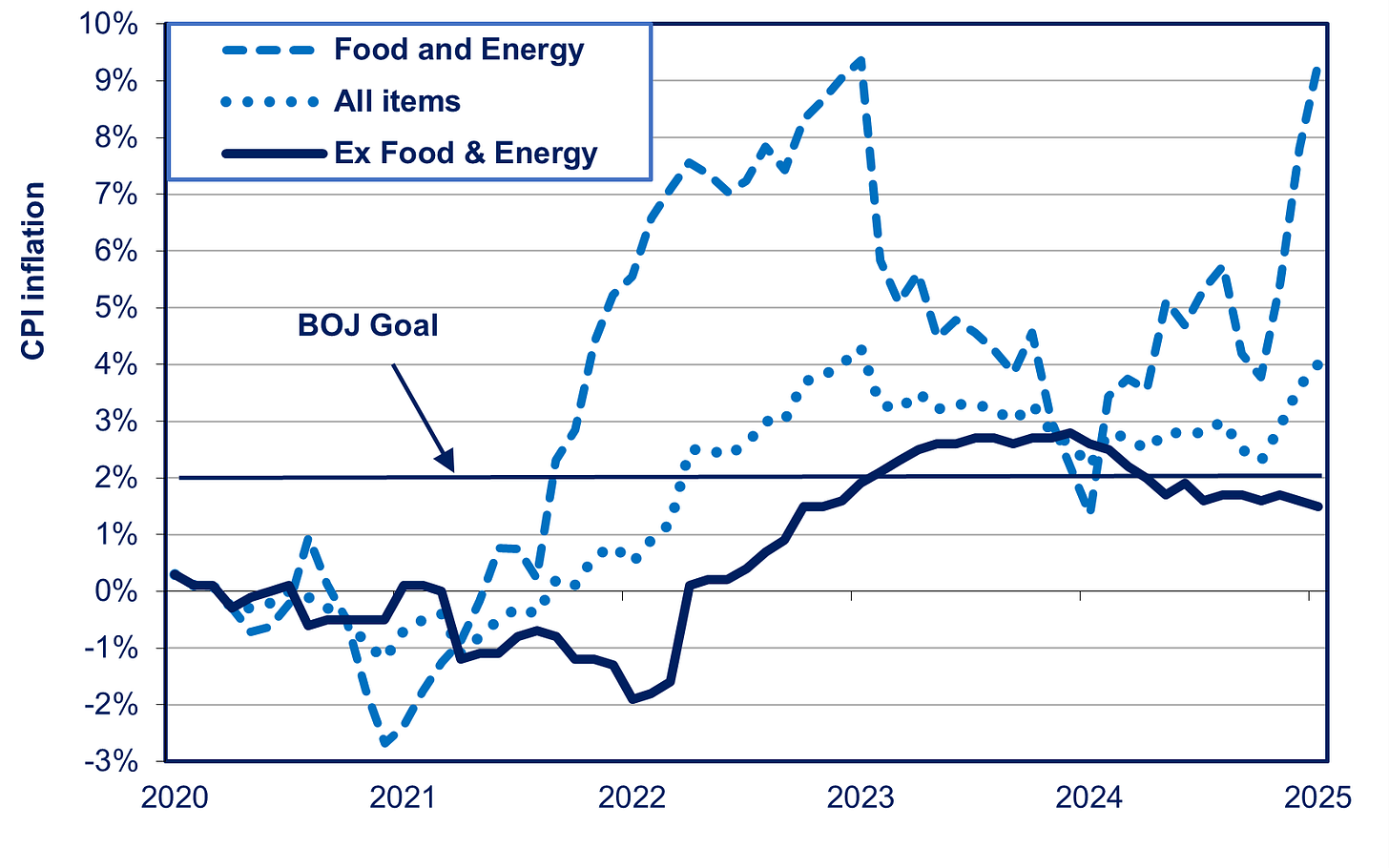Bump In Inflation Entirely Due to 9% Jump In Food and Energy
Rest of CPI rose just 1.5% From A Year Ago
Source: Food and Energy hike is Author calculation based on the data in https://www.e-stat.go.jp/en/stat-search/file-download?statInfId=000032103932&fileKind=1
A 9.3% rise in prices in import-intensive categories of food and energy accounted for the entire jump in the rate of consumer inflation in January to an unexpectedly high 4.0%. The Bank of Japan's version of “core” inflation, all items except fresh food, rose 3.2%. However, all items other than all food and energy—which include 70% of the consumer spending budget--rose only 1.5% from a year. That’s well below the BOJ’s goal of 2%. Worse yet, that’s the smallest rise since 2022. Last January, inflation, except for food and energy, rose 2.6% from the year earlier. (see chart above).
Food and energy are affected not only by a global rise in commodity prices and bird flu but also by the yen's weakness. Items priced in dollars cost even more in yen when the yen weakens.
The bottom line is that Japan is still not certain to reach the healthy 2% rise in inflation led by domestic demand. The latter helps the economy. Japan is suffering from imported inflation, which hurts real wages and, thus, the overall economy. Much will depend on how much wages rise this year.


